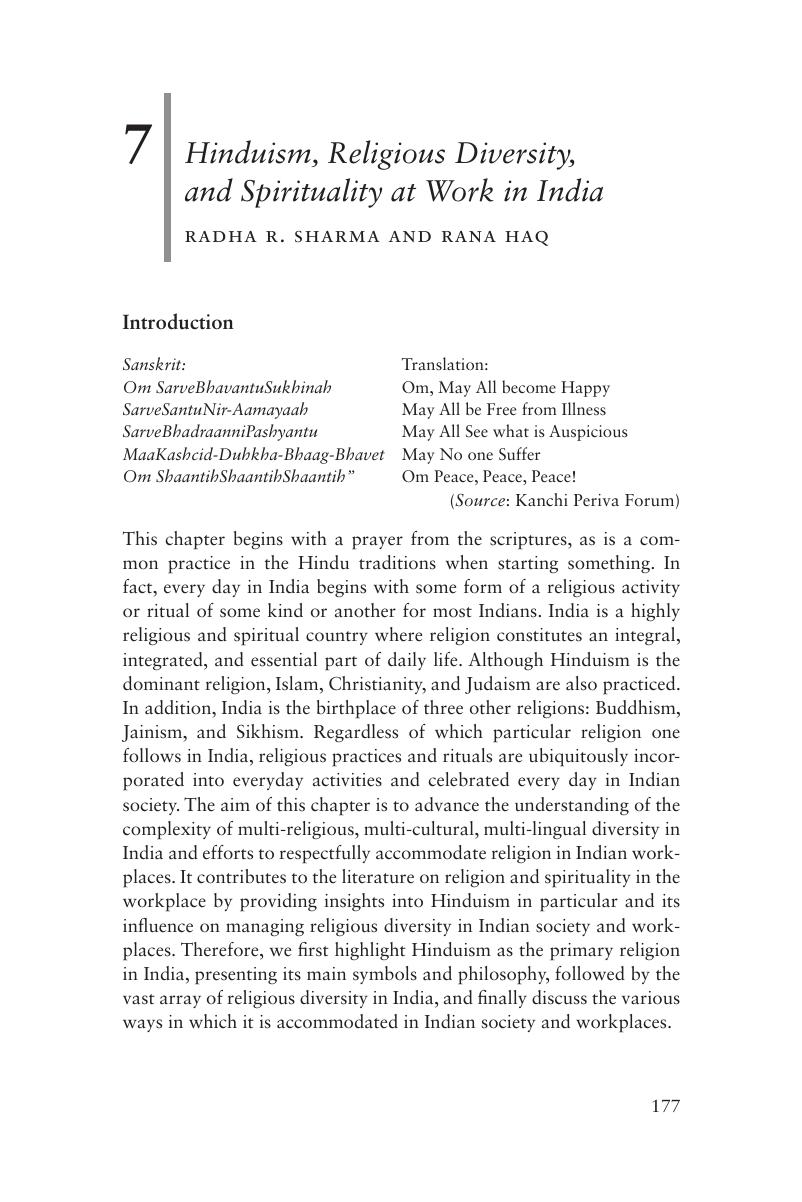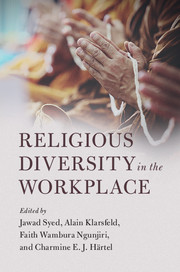Book contents
- Religious Diversity in the Workplace
- Religious Diversity in the Workplace
- Copyright page
- Contents
- Figures
- Tables
- Boxes
- Contributors
- Introduction: The Complex Interface of Work and Religion
- Part I General Frameworks and Sources of Reflection
- Part II Religious Approaches
- 3 The Christian Faith and the Preservation of Personal Identity
- 4 An Islamic View of Diversity: Implications for the Business World
- 5 The Untold, the Unseen, and the Forgettable: Jewishness, Jews, and Judaism in Diversity Management Scholarship
- 6 National Perspectives on Jews at Work: Contrasting Australia, France, Israel, and the UK
- 7 Hinduism, Religious Diversity, and Spirituality at Work in India
- 8 Buddhist Brahmaviharas and Religious Diversity at Work
- Part III Regional Approaches
- Part IV Organizational Approaches
- Index
- References
7 - Hinduism, Religious Diversity, and Spirituality at Work in India
from Part II - Religious Approaches
Published online by Cambridge University Press: 15 December 2017
- Religious Diversity in the Workplace
- Religious Diversity in the Workplace
- Copyright page
- Contents
- Figures
- Tables
- Boxes
- Contributors
- Introduction: The Complex Interface of Work and Religion
- Part I General Frameworks and Sources of Reflection
- Part II Religious Approaches
- 3 The Christian Faith and the Preservation of Personal Identity
- 4 An Islamic View of Diversity: Implications for the Business World
- 5 The Untold, the Unseen, and the Forgettable: Jewishness, Jews, and Judaism in Diversity Management Scholarship
- 6 National Perspectives on Jews at Work: Contrasting Australia, France, Israel, and the UK
- 7 Hinduism, Religious Diversity, and Spirituality at Work in India
- 8 Buddhist Brahmaviharas and Religious Diversity at Work
- Part III Regional Approaches
- Part IV Organizational Approaches
- Index
- References
Summary

- Type
- Chapter
- Information
- Religious Diversity in the Workplace , pp. 177 - 197Publisher: Cambridge University PressPrint publication year: 2017
References
- 2
- Cited by



